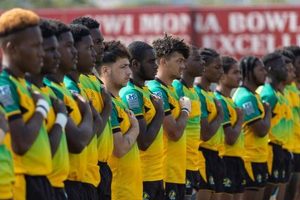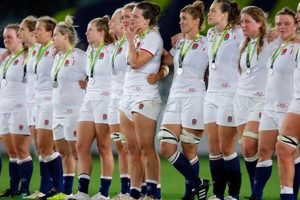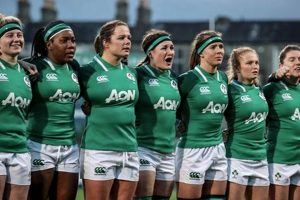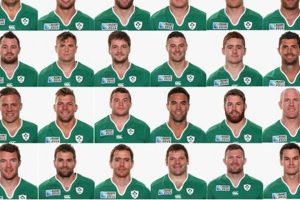Rugby Team Positions Explained: A Comprehensive Guide
Editor’s Note:Rugby is a fast-paced, physical sport that requires teamwork, skill, and strategy. Understanding the different positions on a rugby team is essential for both players and fans. This guide will provide a comprehensive overview of each position, explaining its roles and responsibilities.
After analyzing the various positions and their significance in the game, we’ve compiled this guide to help you gain a deeper understanding of rugby team positions.
Key Differences:
| Position | Role | Responsibilities |
|---|---|---|
| Forwards | Form a defensive and offensive line | Scrummage, tackle, carry the ball |
| Backs | Receive and pass the ball | Run with the ball, score points |
Main Article Topics:
- Front Row: Props, Hooker
- Second Row: Locks
- Back Row: Flankers, Number 8
- Half-Backs: Scrum-half, Fly-half
- Three-Quarters: Centers, Wings, Fullback
Each position in rugby plays a crucial role in the team’s success. By understanding the different responsibilities and skills required for each position, players and fans can gain a deeper appreciation for the game.
1. Forwards
Forwards are the backbone of a rugby team. They form the defensive and offensive line, and are responsible for scrummaging, tackling, and carrying the ball. Without a strong forward pack, it is difficult to win possession of the ball and gain territory. Forwards must be physically strong and have good stamina, as they are often involved in the most physical aspects of the game.
The forwards are divided into two groups: the front row and the back row. The front row consists of the two props and the hooker. The props are responsible for binding together in the scrum and pushing against the opposition. The hooker is responsible for hooking the ball back to the scrum-half after it has been put into the scrum.
The back row consists of two flankers and a number 8. The flankers are responsible for tackling the opposition and supporting the forwards in the scrum. The number 8 is responsible for carrying the ball and breaking through the opposition defense.
The forwards play a vital role in rugby team positions explained. They are responsible for winning possession of the ball, gaining territory, and protecting the team’s defense. Without a strong forward pack, it is difficult to win rugby matches.
Key Insights:
- Forwards are the backbone of a rugby team.
- Forwards are responsible for scrummaging, tackling, and carrying the ball.
- Without a strong forward pack, it is difficult to win possession of the ball and gain territory.
- Forwards are divided into two groups: the front row and the back row.
- The front row consists of the two props and the hooker.
- The back row consists of two flankers and a number 8.
- Each type of forward has a specific role to play in the team.
2. Backs
The backs form the attacking unit of a rugby team. They receive the ball from the forwards and are responsible for running with it, passing it, and scoring points. The backs are typically faster and more agile than the forwards, and they often have better handling skills.
There are three types of backs: half-backs, three-quarters, and the fullback. The half-backs are the scrum-half and the fly-half. The scrum-half is responsible for distributing the ball from the scrum and the fly-half is responsible for directing the team’s attack.
The three-quarters are the centers, wings, and fullback. The centers are responsible for receiving the ball from the half-backs and running with it. The wings are responsible for scoring tries, and the fullback is responsible for covering the backfield and preventing the opposition from scoring.
The backs play a vital role in rugby team positions explained. They are responsible for creating and scoring points, and they often make the difference between winning and losing.
Key Insights:
- The backs are the attacking unit of a rugby team.
- The backs are responsible for running with the ball, passing it, and scoring points.
- The backs are typically faster and more agile than the forwards.
- There are three types of backs: half-backs, three-quarters, and the fullback.
- Each type of back has a specific role to play in the team.
| Position | Role | Responsibilities |
|---|---|---|
| Half-backs | Distribute the ball from the scrum | Direct the team’s attack |
| Three-quarters | Receive the ball from the half-backs and run with it | Score tries |
| Fullback | Cover the backfield | Prevent the opposition from scoring |
3. Front Row
The front row is a crucial component of rugby team positions explained because it forms the foundation of the scrum. The scrum is a set piece that is used to restart play after a minor infringement or when the ball goes out of bounds. The front row binds together and pushes against the opposition front row in order to gain possession of the ball. Without a strong front row, a team will struggle to win possession of the ball and gain territory.
The props are responsible for binding together and pushing against the opposition props. They must be strong and powerful in order to be effective. The hooker is responsible for hooking the ball back to the scrum-half after it has been put into the scrum. The hooker must be agile and have good hand-eye coordination.
The front row plays a vital role in rugby team positions explained. Without a strong front row, a team will struggle to win possession of the ball and gain territory. This can make it difficult to win matches.
Key Insights:
- The front row is a crucial component of rugby team positions explained.
- The front row forms the foundation of the scrum.
- The scrum is a set piece that is used to restart play after a minor infringement or when the ball goes out of bounds.
- The front row binds together and pushes against the opposition front row in order to gain possession of the ball.
- Without a strong front row, a team will struggle to win possession of the ball and gain territory.
| Position | Role | Responsibilities |
|---|---|---|
| Props | Bind together and push against the opposition props. | Must be strong and powerful. |
| Hooker | Hooks the ball back to the scrum-half after it has been put into the scrum. | Must be agile and have good hand-eye coordination. |
4. Second Row
The second row is a crucial component of rugby team positions explained because it forms the foundation of the lineout. The lineout is a set piece that is used to restart play after the ball has gone out of bounds. The second row jumps in the lineout and competes for possession of the ball. Without a strong second row, a team will struggle to win possession of the ball and gain territory.
The locks are responsible for jumping in the lineout and securing possession of the ball. They must be tall and athletic in order to be effective. The locks also play a role in the scrum, where they bind together and push against the opposition.
The second row plays a vital role in rugby team positions explained. Without a strong second row, a team will struggle to win possession of the ball and gain territory. This can make it difficult to win matches.
Key Insights:
- The second row is a crucial component of rugby team positions explained.
- The second row forms the foundation of the lineout.
- The lineout is a set piece that is used to restart play after the ball has gone out of bounds.
- The locks are responsible for jumping in the lineout and securing possession of the ball.
- Without a strong second row, a team will struggle to win possession of the ball and gain territory.
| Position | Role | Responsibilities |
|---|---|---|
| Locks | Jump in the lineout and secure possession of the ball. | Must be tall and athletic. |
5. Back Row
The back row is a crucial component of any rugby team. They are responsible for a variety of tasks, including tackling, carrying the ball, and supporting the forwards and backs. Without a strong back row, a team will struggle to win possession of the ball and gain territory.
- Tackling: The back row is responsible for making tackles and preventing the opposition from gaining ground. They must be strong and physical, and have good tackling technique.
- Carrying the ball: The back row is also responsible for carrying the ball and making yards. They must be powerful and have good ball-handling skills.
- Supporting the forwards and backs: The back row must be able to support the forwards and backs in both attack and defense. They must be able to work as a team and communicate effectively.
The back row is a vital part of any rugby team. They play a key role in both attack and defense, and their performance can have a major impact on the outcome of a match.
6. Half-Backs
Half-backs are pivotal in rugby team positions explained because they serve as the team’s playmakers. They link the forwards and backs, making crucial decisions that shape the team’s attacking strategy.
- Decision-Making:
Half-backs are the brains behind the team’s attack. They assess the opposition, identify weaknesses, and make quick decisions on how to exploit them. Accurate decision-making ensures efficient ball distribution and effective attacking plays.
- Ball Distribution:
Half-backs are responsible for distributing the ball to the backs, who are tasked with advancing the team up the field. They must have excellent passing skills and the ability to execute different types of passes, such as flat passes, pop passes, and chip kicks.
- Communication:
Effective communication is paramount for half-backs. They must relay information from the forwards to the backs, coordinate attacking plays, and adapt to changing game situations. Clear communication ensures that all players are on the same page and working towards the same goal.
- Vision and Anticipation:
Half-backs need exceptional vision and the ability to anticipate the opposition’s moves. They must be able to predict where the ball will go and where their teammates will be positioned, allowing them to make the best decisions for the team.
In conclusion, half-backs play a crucial role in rugby team positions explained. Their decision-making, ball distribution, communication, and vision are essential elements that contribute to a team’s overall success on the field.
7. Three-Quarters
The three-quarters, comprising the centers, wings, and fullback, play a pivotal role in rugby team positions explained. They serve as the primary ball carriers and are responsible for advancing the team up the field, creating scoring opportunities, and preventing the opposition from scoring.
- Ball Carriers and Gaining Ground:
The three-quarters are the primary ball carriers in the team, tasked with receiving the ball from the half-backs and making yards. Their speed, agility, and ball-handling skills enable them to break through the opposition’s defense, gain ground, and set up scoring opportunities. - Creating Scoring Opportunities:
The three-quarters are skilled at exploiting gaps in the defense and creating scoring opportunities for themselves and their teammates. Their ability to offload the ball, make quick decisions, and execute intricate passing sequences is crucial for the team’s attacking success. - Preventing Opposition Scoring:
In addition to their attacking responsibilities, the three-quarters also play a crucial role in defense. The fullback is responsible for covering the backfield and preventing the opposition from scoring tries. The centers and wings support the fullback in tackling and covering the opposition’s attacking players. - Variation in Roles:
While the general roles of the three-quarters are outlined above, there can be variations depending on the team’s strategy and the individual strengths of the players. For instance, some centers may be more focused on defense, while others may excel at creating scoring opportunities.
In conclusion, the three-quarters play a multifaceted role in rugby team positions explained. As the primary ball carriers, they are responsible for advancing the team up the field and creating scoring opportunities. Additionally, their defensive capabilities help prevent the opposition from scoring. The combination of their skills and versatility makes them essential for any successful rugby team.
8. Fullback
In rugby team positions explained, the fullback holds a critical role in the team’s defensive strategy. As the last line of defense, the fullback’s primary responsibility is to safeguard the backfield, which is the area behind the team’s defensive line.
- Protecting the Goal:
The fullback acts as a guardian of the team’s goal, preventing the opposition from scoring tries. They must possess excellent positioning skills, anticipation, and tackling abilities to effectively defend against attacking players. - Covering Open Spaces:
The fullback covers open spaces in the backfield, ensuring that there are no gaps for the opposition to exploit. They must have exceptional speed, agility, and the ability to read the opposition’s attacking patterns. - Communication and Organization:
Effective communication and organization are crucial for the fullback. They must be able to communicate clearly with their teammates, directing their defensive efforts and ensuring that all players are positioned correctly. - Counter-Attacking Opportunities:
While primarily a defensive position, the fullback can also contribute to the team’s attack by initiating counter-attacks. They may receive the ball from a turnover or a kick and have the opportunity to advance the ball up the field.
The fullback’s role in rugby team positions explained is indispensable. Their defensive prowess and ability to protect the goal area are vital for the team’s success. Furthermore, their contributions to counter-attacking and overall defensive organization make them a key player in any rugby team.
FAQs on Rugby Team Positions Explained
This section addresses frequently asked questions to provide a deeper understanding of rugby team positions and their significance.
Question 1: What is the main difference between forwards and backs in rugby?
Forwards primarily focus on securing possession, scrummaging, and tackling, while backs specialize in receiving, passing, and scoring.
Question 2: What is the role of the scrum-half?
The scrum-half distributes the ball from the scrum and acts as a link between the forwards and backs, directing the team’s attacking strategy.
Question 3: What are the key responsibilities of a fly-half?
The fly-half controls the team’s attack by making tactical decisions, distributing the ball effectively, and executing kicks.
Question 4: What is the difference between a center and a wing?
Centers are typically more involved in ball distribution and creating attacking opportunities, while wings primarily focus on running with the ball and scoring tries.
Question 5: What is the fullback’s primary responsibility?
The fullback serves as the last line of defense, protecting the team’s goal area and preventing the opposition from scoring.
Question 6: How do different positions complement each other on a rugby team?
Each position has a specialized role, and when combined, they work together to achieve the team’s overall objectives of gaining possession, advancing the ball, and scoring points.
Overall, understanding the different positions and their responsibilities is crucial for appreciating the complexity and teamwork involved in rugby.
Transition to the next article section:
Tips to Enhance Rugby Team Performance
Understanding rugby team positions is essential, but maximizing team performance requires strategic implementation. Here are some valuable tips to enhance team dynamics:
Tip 1: Foster Cohesive Forward Unit: A strong forward pack is the backbone of any team. Encourage forwards to work together seamlessly in scrums, lineouts, and mauls to gain possession and secure the ball.
Tip 2: Empower Half-Backs as Playmakers: Scrum-halves and fly-halves are the team’s decision-makers. Provide them with the freedom and support to orchestrate attacking plays, distribute the ball effectively, and control the game’s tempo.
Tip 3: Utilize Three-Quarters for Versatility: Centers, wings, and fullbacks bring versatility to the backline. Encourage them to interchange positions, create space for each other, and exploit gaps in the opposition’s defense.
Tip 4: Prioritize Communication and Coordination: Effective communication is paramount. Implement clear communication protocols, both verbally and non-verbally, to ensure all players are on the same page and can adapt swiftly to changing game situations.
Tip 5: Emphasize Discipline and Teamwork: Rugby is a physically demanding sport. Enforce discipline on and off the field to maintain focus, composure, and respect for opponents. Foster a culture of teamwork and mutual support to overcome challenges and achieve collective success.
Tip 6: Leverage Positional Strengths: Each position has unique strengths. Encourage players to embrace their roles and develop their skills accordingly. This specialization will enhance the team’s overall capabilities and effectiveness.
Tip 7: Adapt to Different Playing Conditions: Rugby is played in various weather and pitch conditions. Train your team to adapt their strategies and techniques to suit different surfaces and weather conditions.
Tip 8: Encourage Continuous Improvement: Rugby is a constantly evolving game. Foster a culture of continuous improvement where players and coaches actively seek feedback, analyze performances, and strive for excellence.
By implementing these tips, teams can harness the collective power of individual positions to achieve greater success on the field.
Transition to the conclusion of the article:
Rugby Team Positions Explained
In conclusion, understanding rugby team positions explained is not merely about knowing the roles and responsibilities of each player. It is about recognizing the intricate interplay between these positions and the collective effort required for team success. Every position, from the powerful forwards to the elusive backs, contributes unique skills and perspectives to the game.
By embracing the strengths and dynamics of each position, teams can forge a formidable unit capable of overcoming challenges, executing strategic plays, and achieving their full potential on the field. The game of rugby is a testament to the power of teamwork, where individual brilliance is amplified by a shared understanding of roles and responsibilities. As teams continue to evolve and refine their strategies, the importance of rugby team positions explained will only grow, ensuring the sport’s enduring appeal and the pursuit of excellence.







